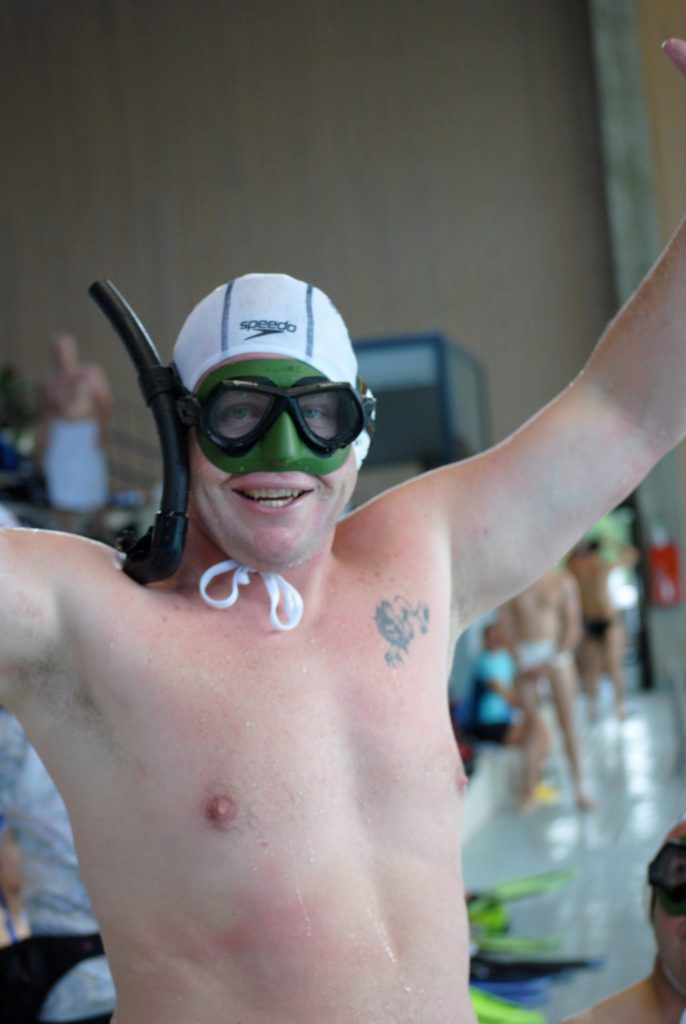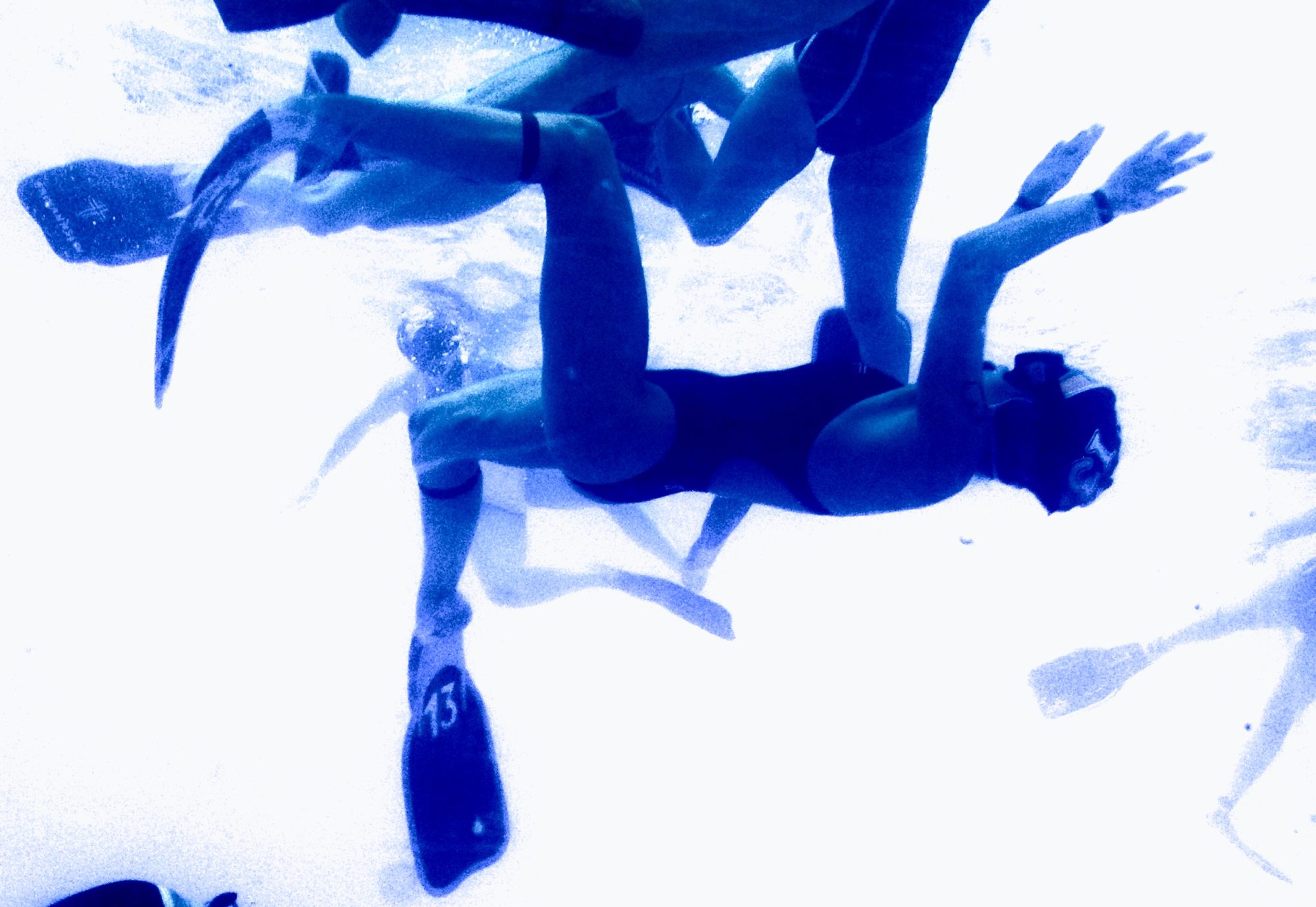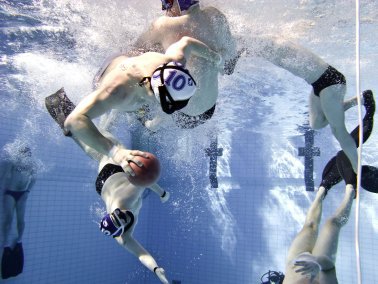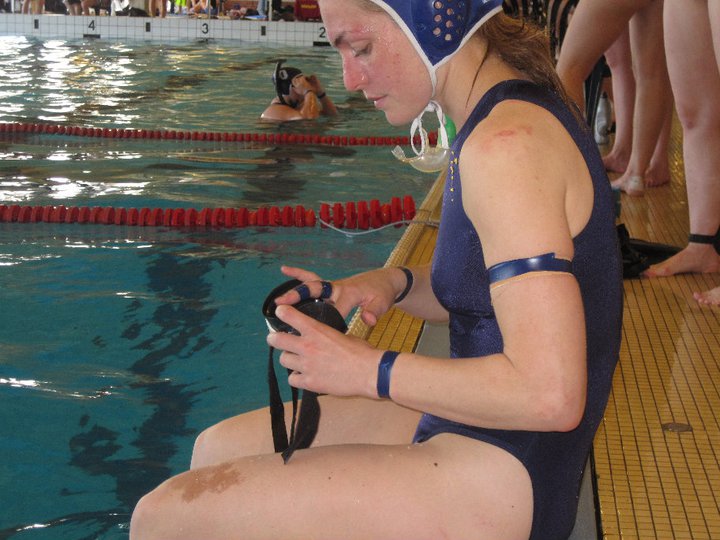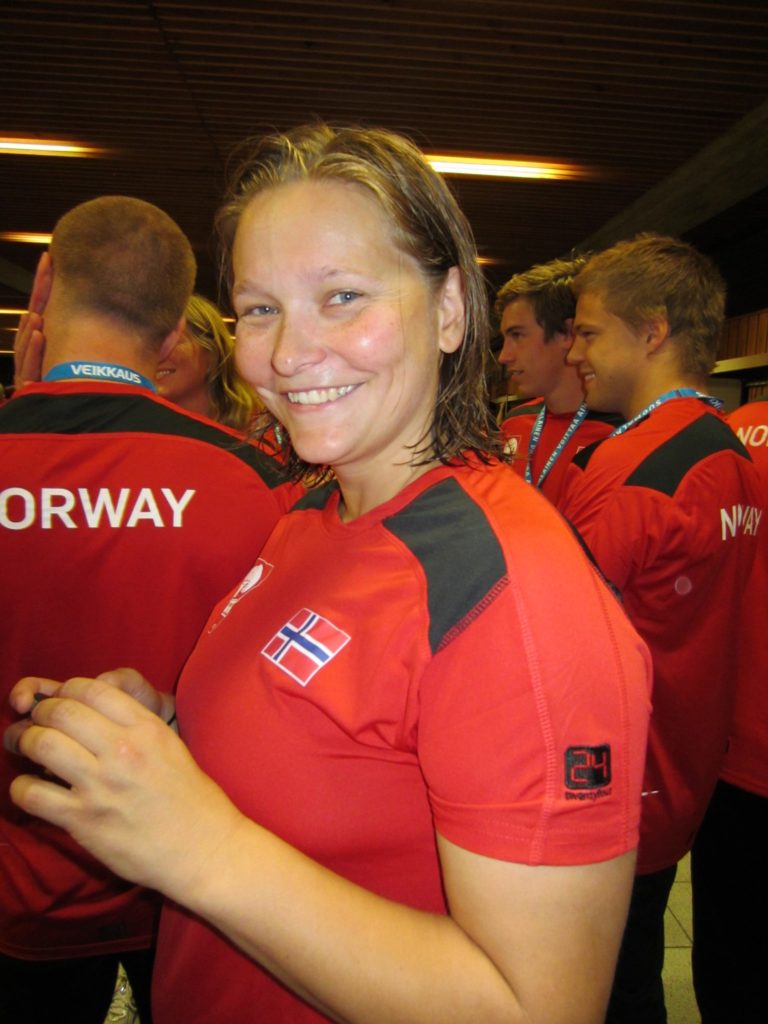The situation for underwater rugby in the USA / interview of Rolexi Pinzon (New Jersey Hammerheads) First published August 6, 2011.
Davrell,
Thanks for your interest on UW Rugby in the US and Canada. Certainly as you mentioned the sudden change of plans from Colombia to Finland and short notice affected our participation. For both US and Canada rugby players this meant a big difference and although we had the interest to participate up to the last minute, in the end we just couldn’t get our teams organized.
Since I was involved in the effort of getting a USA team participating back in the UW Rugby World’s, I would like to answer your questions and clarify the current status of UW Rugby in the US and Canada. At this point we are in constant communication with players in Canada and we are trying to do a common effort to develop UW Rugby in both countries.
Where do the North American teams stand right now in terms of competitiveness at the top level?
We have a mix of well experienced players and very enthusiastic new players. There are three clubs in the US that are constantly practicing and promoting the sport. One of the teams (New Jersey Hammerheads) has been very active locally organizing along other clubs tournaments and clinics and also internationally trying to participate outside the US and get the top level experience needed in the sport, even inviting players from other clubs and players from areas without a club so they can get to experience a high level competition and learn. The East Haven Makos (from Connecticut) is a team that dissapeared for a while but is back with many new and enthusiastic players that is growing really fast. This team has been a great supporter of UW Rugby events. The oldest of the US teams (Quincy UWR) has been active for the longer time and has a lot of experienced players.
Are the skills and tactics up there?
Yes, that has been one of the goals for the clubs. We are constantly in contact with coaches from different teams and experience in all levels (national, league and world championship) and we are always trying to develop, practice and implement both skills and tactics. A big help on this has been the participation of experienced players from other countries like Colombia and Germany.
3) How is UWR growing?
Rugby has been around in the US since the late 90’s and in Canada since 5 years ago
Honestly it has been very slow the last years because of different reasons. First, it is extremely difficult to get access to a pool. Since the sport is not an usual or common sport, support from pools or municipalities is very hard to get. Distances are also a big problem since players sometimes are really far from practice venues. Pools and distances have made extremely difficult to get new teams organized.
The good thing is that right now we have clubs that have been active from long time and clubs that are back in practice again. We have 5 clubs (including some from Canada) that are relatively “close” and all looking into organizing a yearly schedule of events that will help to get an organized calendar.
Yes, UW Rugby is somehow different from waterpolo in regards to swiming skills. You might not be a good swimmer and do good, but still you need basic swimming skills. Being a good swimmer makes a big difference and the learning curve is much shorter.
Since we dont have enough players in the clubs to have men and women’s teams, we play with mixed teams as they do here with UW Hockey teams. The ideal will be to have women teams & tournaments but that’s going to take a long time.
Katie told me that the Michigan players driver four hours to practice in Chicago during the summers. Wow! At the same time a city like Chicago could support a league. Is getting pool time difficult in the USA?
We had no idea of someone playing Rugby in Chicago!!..Thats good news! We’ll contact Katie. As I mentioned getting pool time is extremely difficult because of the costs, insurance, and lack of interest from pool managers/entities to support the sport and also they are afraid of liability issues.
How many play in the USA today?
Hard to say but I would think there are 75-100 active/inactive players.
In Europe UW hockey is big some places while UWR in others. How is it in the US?
UW Hockey is bigger in the US. There are about +/-25 clubs in the country and tournaments all year round.
For UW Rugby we have 3 organized clubs and 2 developing. I’ve heard of groups practicing in Montana and from your email another one in Chicago.
In the case of Canada the situation is similar. UW Hockey is pretty big, but they have now 2 new clubs that are growing really fast.
The good thing is that in both countries we have players that come from countries where UW Rugby is big and have experience in club, league, national and international levels, especially from Colombia and Germany, and that are pushing to develop the sport to the next level.
Do you think USA will be ready next time? How about cup play?
I certainly think that we will be ready for the next Worlds. We have started a common effort with the teams from Canada to make UW Rugby grow locally, and hopefully for next year we will have 1 team from each country (Canada and US) participating in an international tournament (probably in Colombia). From then the next step will be the Champions Cup and the Worlds.
At this point I’m not sure about this year’s Champions Cup if thats what you refer about. Right now I think it will be too soon, but we are thinking about it.
Any sponsorship?
None!
What is the balance of foreign immigrant players to natives?
Hard to say, but I think right now with only active players it is 35% immigrants and 65% local. That varies per club and also that will change if I get to contact Katie and get information from Chicago.
Davrell, for more exact information from canadian teams you can contact the following people (I’ll copy them on this email)
Tom Elliot
Club Liberation (Brandford, ON)
elliottp@mcmaster.ca
Cesar Florez
CAMO UW Rugby (Montreal)
cesaugflorez@hotmail.comSome think UWR has an attraction that is different from water polo. You need to be a good swimmer to get into water polo but UWR is somehow different; people of different levels/men and women can compete together. Correct? If so, how does that affect recruitment?
